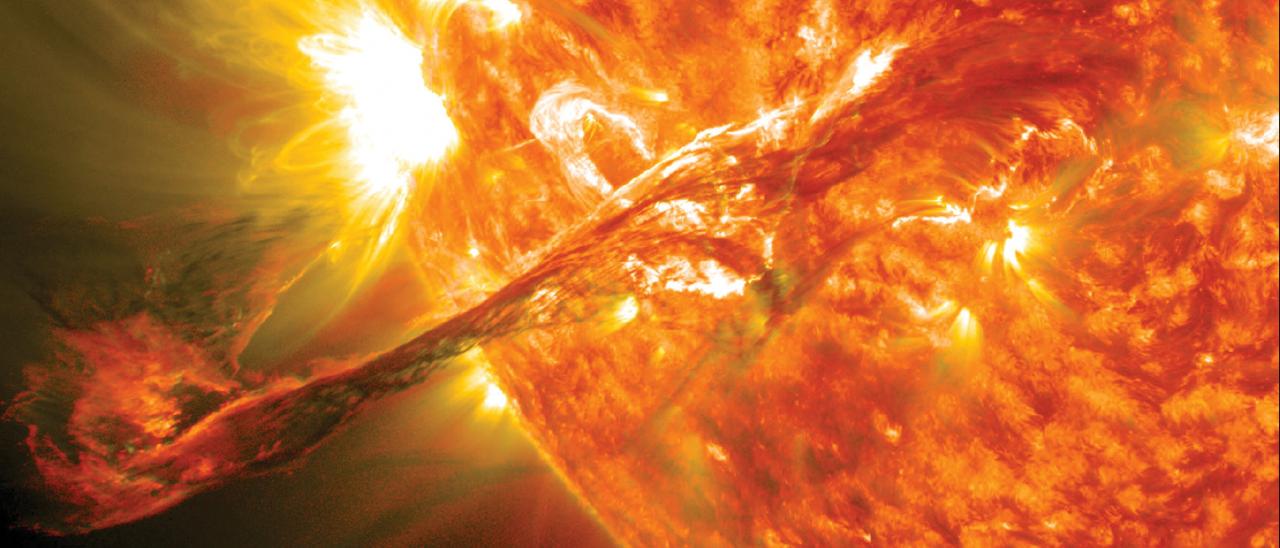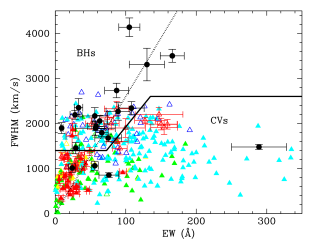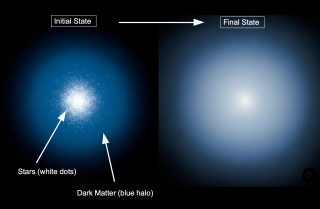The prestigious journal Annual Review of Astronomy and Astrophysics invites two researchers from the Instituto de Astrofísica de Canarias (IAC) to publish an article reviewing the most important advances in the study of the magnetic fields in the outer regions of the solar atmosphere.
Every year, the editorial committee of the journal Annual Review of Astronomy and Astrophysics (ARAA) meets to decide which researchers to invite to prepare their reviews, one for each field in Astrophysics. One of the 12 articles of the recently published volume 60 has been written by the IAC researchers Javier Trujillo Bueno and Tanausú del Pino Alemán. Their main field of research is the study of the magnetic field in the solar atmosphere via the measurement and interpretation of the light polarization in the atomic lines of the solar spectrum.
Both researchers work in the POLMAG research team, created in 2018 in the framework of the Advanced Grant that the European Research Council awarded to Javier Trujillo Bueno, CSIC research Professor and senior scientist of the IAC (see http://research.iac.es/proyecto/polmag/). The review article written by the two IAC researchers and published by ARAA deals with the “Magnetic Field Diagnostics in the Solar Upper Atmosphere” and can be found at the following URL link: https://arevie.ws/jtbueno
Magnetic fields are responsible for the spectacular activity observed in the outer regions of the solar atmosphere, which include the chromosphere, the transition region, and the corona. In such relatively hot and rarefied regions of the solar atmosphere, the magnetic field cannot be directly measured and its determination or inference is very complex. This is because the observables of the solar radiation that are sensitive to such magnetic fields are difficult to measure and interpret.
The most important observable is the polarization signal that the joint action of scattering processes within the solar atmosphere and the Hanle and Zeeman effects produces in some spectral lines, among which the most intense atomic lines in the ultraviolet solar spectrum are found. In their paper, Javier Trujillo Bueno and Tanausú del Pino Alemán review the most important theoretical and observational achievements and explain why they think that we are witnessing the beginning of a new revolution in Solar Physics.
*(a) Intensity image of the Sun’s upper atmosphere taken by the Solar Dynamics Observatory. It shows the composite image of an erupting prominence with plasma at 105 K (red) and 106 K (yellow). (b) Hi Balmer alpha line center intensity image. (c) White light image of the total solar eclipse on August 21, 2017, from Wyoming, USA. It shows a composition of 53 eclipse images. (d) Intensity image of the solar disk on April 15, 2021. It shows a composition of images taken at the wavelengths 171, 193, and 211 A. Panel ˚ a reproduced from NASA’s GSFC & SDO AIA Team (2018). Photo in panel b taken using the Swedish 1-m Solar Telescope (Roque de los Muchachos Observatory, La Palma, Spain) and provided by L. Rouppe van der Voort and M. van Noort. Panel c adapted from image archived by Miloslav Druckmüller, Eclipse Photography, with permission, http://www.zam.fme.vutbr.cz/~druck/eclipse/. Panel d adapted from image archived by SDO AIA Team, Atmospheric Imaging Assembly, https://sdowww.lmsal.com/suntoday_v2/.
Contact at the IAC:
- Javier Trujillo Bueno
- Tanausú del Pino Alemán




